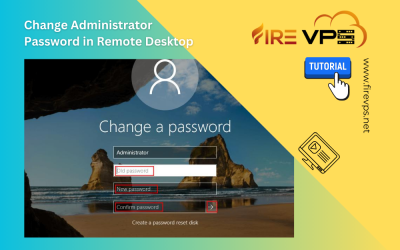Command Not Found in Linux: Real Error Examples & How to Fix Them
Linux is powerful, but if you're new to it, encountering a message like "command not found" can be frustrating. Whether you're using Ubuntu, CentOS, Debian, Arch, or any other distro, this is one of the most commonly searched and seen errors.
In this guide, I'll break down real-life examples of this error and show you exactly how to fix them across different distributions.
What Does "Command Not Found" Actually Mean?
- The command is not installed.
- The command is installed, but not in your PATH.
- You made a typo in the command.
Most Common "Command Not Found" Errors & Fixes Across Distros
Here are some of the most commonly searched "command not found" errors users encounter:
- bash: ifconfig: command not found
# Ubuntu/Debian: sudo apt install net-tools # CentOS/RHEL: sudo yum install net-tools # Fedora: sudo dnf install net-tools # Arch Linux: sudo pacman -S net-tools # Alpine: sudo apk add net-tools # openSUSE: sudo zypper install net-tools - bash: pip: command not found
# Ubuntu/Debian: sudo apt install python3-pip # CentOS/RHEL: sudo yum install python3-pip # Fedora: sudo dnf install python3-pip # Arch Linux: sudo pacman -S python-pip # Alpine: sudo apk add py3-pip # openSUSE: sudo zypper install python3-pip - bash: python: command not found
# Ubuntu/Debian: sudo apt install python3 # CentOS/RHEL: sudo yum install python3 # Fedora: sudo dnf install python3 # Arch Linux: sudo pacman -S python # Alpine: sudo apk add python3 # openSUSE: sudo zypper install python3 - bash: git: command not found
# Ubuntu/Debian: sudo apt install git # CentOS/RHEL: sudo yum install git # Fedora: sudo dnf install git # Arch Linux: sudo pacman -S git # Alpine: sudo apk add git # openSUSE: sudo zypper install git - zsh: node: command not found
# Recommended for all distros: curl -o- https://raw.githubusercontent.com/nvm-sh/nvm/v0.39.7/install.sh | bash nvm install node - bash: curl: command not found
# Ubuntu/Debian: sudo apt install curl # CentOS/RHEL: sudo yum install curl # Fedora: sudo dnf install curl # Arch Linux: sudo pacman -S curl # Alpine: sudo apk add curl # openSUSE: sudo zypper install curl - bash: sudo: command not found
(If you're logged in as root)# Ubuntu/Debian: apt install sudo # CentOS/RHEL: yum install sudo # Fedora: dnf install sudo # Arch Linux: pacman -S sudo # Alpine: apk add sudo # openSUSE: zypper install sudo
What If the Command Is Installed But Still Not Found?
You might need to add it to your PATH.
Check PATH:echo $PATH
Example Fix:export PATH=$PATH:/usr/local/bin
To make it permanent, add that line to your .bashrc or .zshrc file.
How to Find the Package That Provides a Command
- Debian/Ubuntu:
apt-cache searchapt-file search # install via: sudo apt install apt-file - CentOS/Red Hat:
yum provides "*/" - Fedora:
dnf provides - Arch Linux:
pacman -F# Needs updated file database - Alpine:
apk search -v - openSUSE:
zypper search
Bonus: Fixing Your Own Custom Scripts
If you're creating custom bash scripts:
- Save them in a known location, e.g.,
~/scripts - Add that location to your PATH:
export PATH="$PATH:$HOME/scripts"
FAQ: Command Not Found in Linux
Why do I get 'command not found' even after installing a package?
It could be because the binary is not in your system’s PATH. Run echo $PATH to see your current PATH, and ensure it includes the directory where the binary is installed.
What's the difference between 'command not found' in bash vs zsh?
Functionally, it’s the same issue — the shell can’t locate the command. The error message just varies by shell (bash: vs zsh:).
How can I make a command available permanently?
Add the installation directory to your PATH via .bashrc, .zshrc, or profile files: export PATH=”$PATH:/custom/path/to/bin”
Can I use a universal method to install missing commands?
Yes, for some tools like Node.js or Python, using version managers like nvm, pyenv, or package managers
like snap or flatpak can help across multiple distros.
Should I worry if 'sudo' itself is not found?
sudo is missing, you may need to switch to the root account using su and install it manually depending on your distroConclusion
"Command not found" is common—but very fixable. Start by checking if the package is installed, then inspect your PATH. Whether you're managing servers or just learning Linux, these tips will help you quickly resolve the issue.
For persistent issues or uncommon errors, check the exact error and search it—or refer to this guide!
Table of Contents
If you are still having any issues or confusion, please feel free to contact us via Live Chat on our website. Our support team is always ready to help you.
Related Posts
How to change Administrator password in Remote Desktop
First, log in as Administrator user to your Windows Server 2012 R2. Then press Ctrl+Alt+End all 3...

